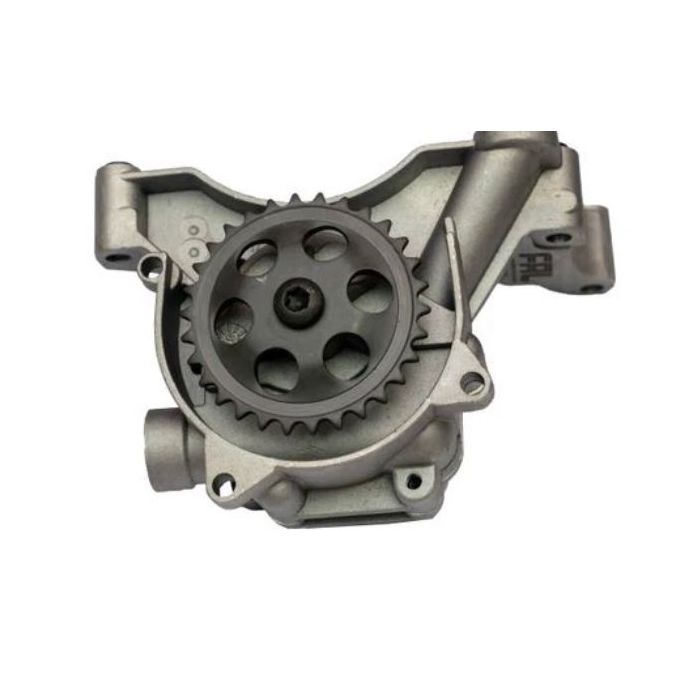Exactly How a Clp Engine Can Boost Effectiveness in Various Industries
The arrival of CLP engines marks a significant shift in functional effectiveness throughout different fields, driven by their capability to enhance gas usage and minimize downtime. Industries such as production and logistics stand to acquire considerably from their robust layout and consistent power result, which promise to enhance operations and improve efficiency. As organizations progressively focus on sustainability together with performance, the role of CLP engines ends up being also more crucial. What continues to be to be seen is exactly how these innovations will shape the future landscape of commercial operations and their influence on wider financial trends (clp engine).
Summary of CLP Engines
CLP engines, or Continuous Liquid Propellant engines, stand for a considerable development in propulsion modern technology, particularly for room applications. These engines use a constant feed system that enables the continual expulsion of propellant, bring about improved efficiency and performance contrasted to standard solid or hybrid propulsion systems. By maintaining a consistent circulation of liquid propellant, CLP engines can attain a lot more accurate thrust control, which is crucial for maneuvering spacecraft in numerous objective scenarios.
The layout of CLP engines integrates innovative products and innovative gas management systems. clp engine. This leads to decreased weight and increased dependability, important variables for long-duration area missions. The continual operation lessens the risk of burning instability, a common obstacle in conventional rocket engines.

Benefits in Manufacturing
The manufacturing of Continuous Fluid Propellant (CLP) engines offers numerous remarkable benefits that improve both efficiency and cost-effectiveness. One of the key advantages is the streamlined production process, which lowers the intricacy connected with typical propulsion systems. By using fluid propellant, suppliers can attain higher precision in engine performance, leading to optimized power outcome and decreased waste.
Additionally, CLP engines promote a greater degree of modularity, permitting easier assimilation into various production lines. This versatility can substantially lower preparations and enhance overall functional flexibility. The use of CLP technology additionally has a tendency to minimize the demand for extensive upkeep because of less relocating parts, which converts into lowered downtime and operational prices.

Applications in Logistics
Leveraging Constant Liquid Propellant (CLP) engines in logistics provides considerable benefits in functional effectiveness and integrity. These engines give a durable remedy for numerous transport requirements, allowing the seamless motion of products across vast distances. The inherent design of CLP engines permits for regular power result, which converts into smoother and much more predictable transportation timetables.
Among the crucial applications of CLP engines in logistics is in heavy-duty freight transportation, where they can drive both ground and airborne automobiles. Their ability to keep high efficiency under varying tons conditions ensures that distribution timelines are fulfilled, consequently improving customer satisfaction. In addition, CLP engines useful link can be incorporated right into automated logistics systems, assisting in real-time tracking and maximizing path planning.
Moreover, the resilience of CLP engines lowers upkeep downtime, allowing logistics firms to maximize their functional capabilities. This is specifically helpful in warehousing procedures, where efficiency in taking care of and delivering goods is essential. As logistics remains to evolve, the assimilation of CLP engines represents a forward-thinking strategy that not only enhances performance however also sustains the industry's expanding needs for dependability and rate.
Influence On Energy Effectiveness
How do Continual Liquid Propellant (CLP) engines improve power efficiency in transport? CLP engines utilize a constant circulation of liquid fuel, maximizing burning processes and keeping a stable thrust result. This design reduces power losses associated with typical combustion engines, where fuel delivery can differ and bring about ineffectiveness.
The continual procedure of CLP engines allows for a much more reliable thermal cycle, causing higher particular impulse compared to standard engines. clp engine. This equates to minimized gas consumption for the same amount of work done, dramatically lowering operational expenses across numerous transportation industries, including air travel and maritime sectors
In addition, the ability of CLP engines to maintain optimal performance under varying load conditions decreases the requirement for constant velocity and slowdown, better boosting gas performance. Boosted energy efficiency not only adds to set you back financial savings yet also results in lower greenhouse gas emissions, aligning with global sustainability goals.
Future Trends and Innovations
Arising innovations in Continual Fluid Propellant (CLP) engine modern technology assurance to change the landscape of transport effectiveness and sustainability. As markets pivot toward greener alternatives, CLP engines stand at the center, incorporating ingenious materials and design methodologies that boost efficiency while lessening environmental impact.
Among one of the most appealing trends is the fostering of crossbreed systems that integrate CLP engines with eco-friendly power sources. This harmony can you can find out more maximize fuel consumption and lower discharges, lining up with global sustainability objectives. Furthermore, developments in computational liquid dynamics (CFD) are facilitating the layout of more aerodynamically efficient engines, bring about decreased drag and improved gas efficiency.
In addition, the advancement of clever tracking systems is set to boost functional effectiveness. These systems leverage data analytics and IoT modern technology to enhance engine efficiency in real-time, guaranteeing that the engines run within their most efficient specifications.
As study proceeds to check out different propellant formulations-- such as biofuels and artificial gas-- the future of CLP engines looks click to read more promising. By taking advantage of these innovations, markets can not just improve their effectiveness yet also add considerably to a cleaner, more sustainable future in transport.
Conclusion
In final thought, CLP engines stand for a significant development in performance across multiple industries. Their capacity to maximize fuel usage and lower operational costs, integrated with a constant feed system, improves power outcome and functional integrity. The assimilation of advanced materials and fewer moving parts reduces maintenance demands, while positioning with sustainability objectives settings CLP engines as a crucial technology for the future. Continued innovation in this field promises further improvements in efficiency and environmental efficiency.
Comments on “Invest in a durable clp engine for better efficiency.”